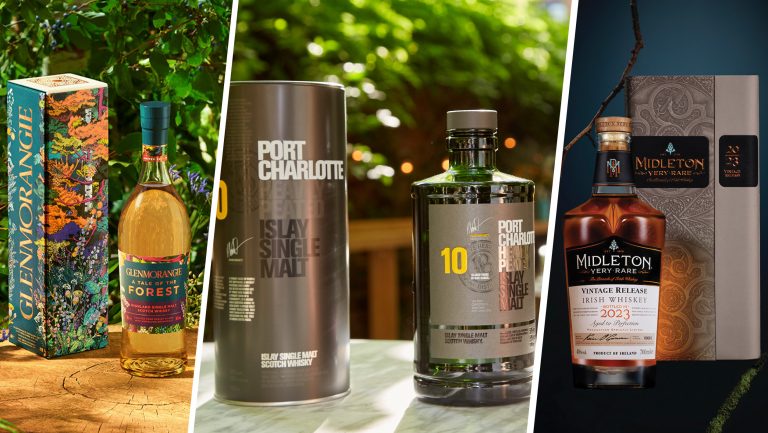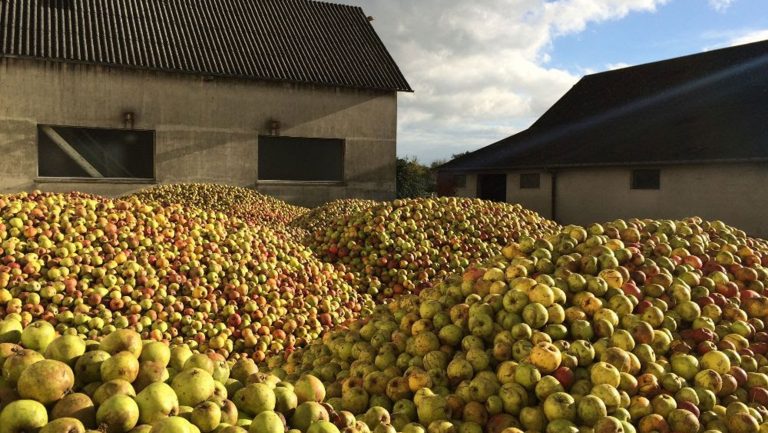For most of vodka’s existence in the modern marketplace, the conversation was almost exclusively about what the spirit goes in, rather than what goes in the spirit. But thanks to a surge in consumers’ desire for “authenticity” (whatever that may mean), and growing interest in how and where the products they purchase are made, vodka marketers are starting to talk a lot more about base ingredients.
For instance, BiVi Vodka, billed as “the first Sicilian vodka” (and backed by Sicilian American actor Chazz Palminteri), markets itself as being made from semolina wheat grown in the “rich volcanic soils” of Sicily and distilled with “pure mountain spring water.” That was a core component of the brand’s positioning (aside from the celebrity angle) when it launched in late 2015, and it still is today.
Some more established brands, especially those on the super-premium tier of the business, have been integrating more ingredient-centric messages into their marketing as well. Belvedere Vodka, for one, has been playing up the Poland-produced brand’s grain base in its campaigns. For the past few years, “Rye, water, character,” has been Belvedere’s rallying cry, highlighting both its simple recipe and a grain known for its complexity. It certainly hasn’t hurt that rye awareness is surging, thanks to the brisk growth of rye whiskey in recent years. U.S. rye whiskey volume, which grew 17 percent in 2016, and 19.5 percent in 2015, according to the Distilled Spirits Council, has increased nearly tenfold since 2006.

Don’t miss the latest drinks industry news and insights. Sign up for our award-winning newsletters and get insider intel, resources, and trends delivered to your inbox every week.
“The awareness of rye as an ingredient and the understanding of its flavor profile has increased significantly, and I’m sure you could attribute this to the popularity of the rye whiskey category, and the large interest particularly driven in the U.S.A.,” says Alice Farquhar, Belvedere’s global education and training manager.
Rye is known for its spicy, peppery, and sometimes nutty character, with a touch of sweetness. One of Belvedere’s line extensions, Belvedere Unfiltered, which the brand has dubbed “the whiskey drinker’s vodka,” bypasses the filtration stage in its production to amp up some of those attributes.
One of Belvedere’s competitors among the super-premium Polish vodka space, Chopin Vodka, approaches its small-batch releases from a different angle. For Chopin’s Single series, it distills the spirit only once (versus the four-plus distillations typical of vodka) to retain much of the base ingredients’ character. The line includes Single Potato, Single Young Potato (low-starch potatoes harvested early), Single Rye, and Single Wheat, many of which are bottled with different vintage years.
At some point, all this talk of “character” and “flavor” raises the question, When does vodka stop being vodka? You could easily make the case that products like Chopin Single Wheat and Single Rye are closer to unaged white whiskey than vodka, which—by definition—is neutral. Chopin gets around this issue by not explicitly calling its Single line vodka. The top of the label includes a smaller-than-usual Chopin logo and the word “vodka” in even tinier lettering, but the product’s official description on the label is “spirits distilled from rye” or other base.
The European Union and the U.S. have their own definitions of what precisely constitutes vodka, but they’re mostly aligned—especially on the neutral aspect. However, the exact requirements can be somewhat nebulous, and many distillers are happy to keep it that way.
“With vodka, the only real regulation that the federal government has is that the spirit has to come off our stills at 190 proof and have a ‘neutral quality,’” notes R.B. Wolfensberger, cofounder, with wife Meghan Brown, of Gray Wolf Craft Distilling in Saint Michaels, Maryland. Gray Wolf, founded last year, uses space within another craft spirits producer, Lyon Distilling Company, to produce its Lone Single Malt Vodka.
“I like the vague definition of ‘neutral’ that we get from the TTB [Alcohol and Tobacco Tax and Trade Bureau]. It opens up a lot of opportunities for creativity at distilleries,” Wolfensberger says. “I always tell people that whatever regulations the feds give me, I will play along and not ask for any more clarity because it would probably lead to more regulations.”
There’s nothing in the government guidelines that says Gray Wolf can’t adopt a whiskey term like “single malt” and apply it to a vodka. Lone is made with 100-percent, malted two-row barley, which imparts some of the subtle malt sweetness of a whiskey or beer.
Of course, co-opting the term single malt can be a bit of a risky proposition, especially where whiskey aficionados are concerned. “No one’s ever said anything directly to my face, but I’m sure they’re out there,” Wolfensberger says, laughing. “There are so many people that are passionate about whiskey that I’m sure someone doesn’t look very favorably on me as a vodka. But I’m just trying to do something different, and I’m always going to look for a way to make things interesting for the spirits connoisseur—something that’s going to catch their attention and separate us from someone else that’s just trying to make vodka, gin, or whiskey.”
Another East Coast vodka maker, Graybeard Distillery of Durham, North Carolina, is starting to grab the market’s attention with the rice base of its Bedlam Vodka. While rice does commonly pop up in some other spirits, as well as beer, it’s not all that common in vodka. Head distiller Scott Russ says he was really trying to approximate an old family recipe that originated a few generations ago in Ireland (Bedlam is actually the name of an Irish town). Russ’s grandfather compared the not-exactly-legal rice-based spirit to vodka, which is why Graybeard sought to create a brand for that category rather than something like a white whiskey. (Incidentally, the original spirit would probably have been classified as poitín—pronounced puh-tcheen—essentially, Irish moonshine.)
“Not to disparage the multiple spirits created out there in the industry with a lot of polish, whether they’re made from corn or wheat or potatoes, but they all have a very similar base flavor profile, depending on how many times they filter it, redistill it, or anything else,” Russ says. “Ours is a vodka, you can tell it’s a vodka, but it’s not like anything else.”
What sets its apart, he believes, is the pronounced floral, mildly sweet nose. Bedlam made its public debut in April at the Wine and Spirits Wholesalers of America Convention in Orlando, Florida, where it walked away with a few awards: the Hot New Now Media Award, a silver medal in the Spirits Tasting Competition, and the top prize in the convention’s “Shark Tank”–like Brand Battle contest.
Every little bit of recognition helps, as it’s notoriously difficult for a brand to break through in the cluttered vodka category. It’s the largest spirits category by volume, at nearly 70 million cases, according to the Distilled Spirits Council, representing nearly one-third of all spirits sold in the U.S.
“It is important now, with a generation that has lived through a recession, to seek value in purchase,” says Belvedere’s Farquhar. “And this leads to many [people] craving more knowledge and understanding about a product that shows heritage, quality of ingredients, production methods, and brand commitments as crucial in helping them make the choice in purchase.”

Dispatch
Sign up for our award-winning newsletter
Don’t miss the latest drinks industry news and insights—delivered to your inbox every week.
Jeff Cioletti is a former editor in chief of Beverage World magazine and the author of the books The Drinkable Globe, The Year of Drinking Adventurously, Beer FAQ, and the upcoming Sakepedia. He’s a Certified International Kikisake-shi (sake sommelier).






